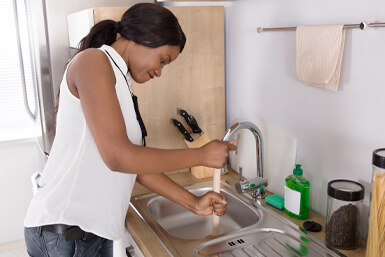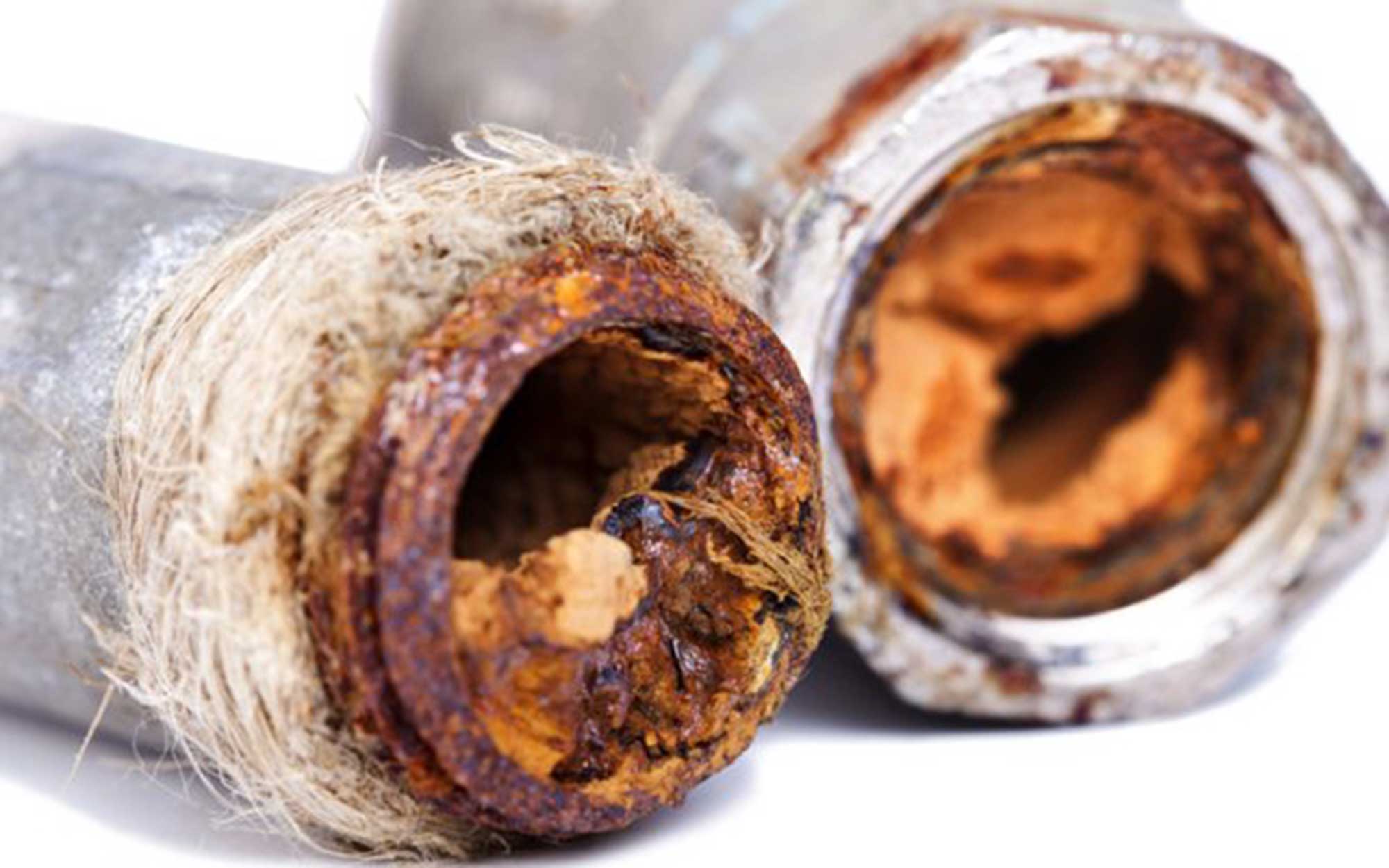They are making a number of great points regarding Why is My Home Making Strange Plumbing Noises in general in this article just below.

To diagnose noisy plumbing, it is essential to identify very first whether the undesirable noises take place on the system's inlet side-in various other words, when water is transformed on-or on the drainpipe side. Sounds on the inlet side have actually differed causes: too much water stress, worn valve as well as tap components, poorly connected pumps or other devices, incorrectly placed pipe fasteners, and plumbing runs containing too many limited bends or various other limitations. Noises on the drain side typically stem from bad place or, similar to some inlet side sound, a format having limited bends.
Hissing
Hissing sound that takes place when a faucet is opened slightly generally signals excessive water stress. Consult your neighborhood public utility if you believe this issue; it will be able to tell you the water stress in your location and also can set up a pressurereducing valve on the incoming supply of water pipe if needed.
Various Other Inlet Side Noises
Creaking, squeaking, scraping, snapping, as well as tapping typically are triggered by the expansion or contraction of pipes, generally copper ones providing warm water. The noises occur as the pipelines slide versus loosened fasteners or strike nearby residence framework. You can commonly identify the location of the problem if the pipelines are subjected; just adhere to the sound when the pipelines are making sounds. Probably you will certainly discover a loose pipeline wall mount or an area where pipes exist so near to floor joists or other mounting pieces that they clatter against them. Affixing foam pipeline insulation around the pipes at the point of contact must fix the problem. Make certain straps and wall mounts are protected and also supply sufficient support. Where feasible, pipe fasteners must be attached to substantial architectural elements such as structure walls as opposed to to framing; doing so lessens the transmission of vibrations from plumbing to surface areas that can magnify and move them. If attaching fasteners to framework is inevitable, cover pipes with insulation or various other durable product where they get in touch with bolts, as well as sandwich completions of new bolts between rubber washing machines when installing them.
Dealing with plumbing runs that struggle with flow-restricting limited or various bends is a last resource that ought to be taken on only after getting in touch with an experienced plumbing service provider. Unfortunately, this circumstance is relatively common in older homes that may not have been built with interior plumbing or that have seen numerous remodels, particularly by beginners.
Chattering or Shrieking
Extreme chattering or screeching that happens when a shutoff or faucet is switched on, which usually goes away when the fitting is opened fully, signals loose or malfunctioning internal parts. The option is to change the valve or tap with a new one.
Pumps and home appliances such as cleaning machines as well as dish washers can move motor sound to pipes if they are incorrectly attached. Connect such items to plumbing with plastic or rubber hoses-never rigid pipe-to isolate them.
Drainpipe Sound
On the drainpipe side of plumbing, the principal objectives are to remove surface areas that can be struck by falling or rushing water as well as to protect pipelines to have unavoidable audios.
In brand-new building, bath tubs, shower stalls, commodes, and wallmounted sinks as well as containers need to be set on or versus resilient underlayments to decrease the transmission of noise with them. Water-saving bathrooms and also taps are much less loud than conventional models; install them instead of older types even if codes in your area still permit utilizing older fixtures.
Drainpipes that do not run vertically to the basement or that branch into horizontal pipe runs supported at floor joists or other framing present particularly frustrating sound troubles. Such pipelines are large enough to radiate significant vibration; they likewise bring substantial quantities of water, that makes the scenario even worse. In brand-new building and construction, define cast-iron dirt pipelines (the big pipes that drain toilets) if you can afford them. Their enormity has a lot of the sound made by water going through them. Likewise, prevent routing drainpipes in walls shown to rooms and also spaces where people gather. Wall surfaces having drains should be soundproofed as was defined previously, making use of dual panels of sound-insulating fiber board as well as wallboard. Pipelines themselves can be wrapped with special fiberglass insulation made for the purpose; such pipes have an impervious plastic skin (sometimes containing lead). Outcomes are not constantly sufficient.
Thudding
Thudding sound, commonly accompanied by trembling pipelines, when a faucet or appliance valve is switched off is a problem called water hammer. The sound as well as vibration are caused by the resounding wave of stress in the water, which unexpectedly has no location to go. In some cases opening a shutoff that discharges water rapidly into an area of piping consisting of a limitation, elbow joint, or tee fitting can generate the exact same condition.
Water hammer can usually be healed by mounting fittings called air chambers or shock absorbers in the plumbing to which the problem shutoffs or taps are linked. These devices enable the shock wave created by the halted circulation of water to dissipate in the air they contain, which (unlike water) is compressible.
Older plumbing systems might have short upright sections of capped pipeline behind walls on tap runs for the very same function; these can eventually full of water, reducing or damaging their effectiveness. The treatment is to drain the water supply totally by shutting down the primary water valve and also opening all taps. Then open up the main supply valve and also close the taps one at a time, beginning with the faucet nearest the shutoff and also ending with the one farthest away.
WHY IS MY PLUMBING MAKING SO MUCH NOISE?
This noise indeed sounds like someone is banging a hammer against your pipes! It happens when a faucet is opened, allowed to run for a bit, then quickly shut — causing the rushing water to slam against the shut-off valve.
To remedy this, you’ll need to check and refill your air chamber. Air chambers are filled with — you guessed it — air and help absorb the shock of moving water (that comes to a sudden stop). Over time, these chambers can fill with water, making them less effective.
You’ll want to turn off your home’s water supply, then open ALL faucets (from the bathroom sink to outdoor hose bib) to drain your pipes. Then, turn the water back on and hopefully the noise stops! If you’re still hearing the sound, give us a call to examine further.
Whistles
Whistling sounds can be frustrating, as sometimes the source isn’t easily identified. However, if you can pinpoint which faucet or valve that may be the cause, you’ll likely encounter a worn gasket or washer — an easy fix if you replace the worn parts!Whistling sounds from elsewhere can mean a number of things — from high water pressure to mineral deposits. Your best plan of attack here is to give our plumbing experts a call. We’ll be able to determine where the noise is coming from and what the cause may be, then recommend an effective fix!
Cracks or Ticks
Cracking or ticking typically comes from hot water going through cold, copper pipes. This causes the copper to expand resulting in a cracking or ticking sound. Once the pipes stop expanding, the noise should stop as well.
Pro tip: you may want to lower the temperature of your water heater to see if that helps lessen the sound, or wrapping the pipe in insulation can also help muffle the noise.
Bangs
Bangs typically come from water pressure that’s too high. To test for high water pressure, get a pressure gauge and attach it to your faucet. Water pressure should be no higher than 80 psi (pounds per square inch) and also no lower than 40 psi. If you find a number greater than 80 psi, then you’ve found your problem!
Next step is to give us a call in order to install a pressure regulator. Trust us, you don’t want to wait to resolve this issue. Not only is the sound annoying, but high water pressure can be destructive to your home — including damaging certain appliances, like your washer and dishwasher.
Dripping
You might be accustom to the slow quiet drip your kitchen faucet makes. You might have even tuned out your bathroom sink dripping and drabbing all day long — but it’s time to find its cause.
A slow drip could signify a variety of easy to fix issues, such as a worn out O ring, or loose part. And by ignoring the drip, you could be wasting up to 2,000 gallons of water a year! So start conserving water — get it looked at ASAP.
https://www.pwessig.com/blog/2018/december/why-is-my-plumbing-making-so-much-noise-/

I'm certainly very interested by Why Do My Pipes Make Noises and I really hope you appreciated my piece. Don't hesitate to take the time to distribute this page if you liked it. We appreciate reading our article about How To Fix Noisy Pipes.
Check It Out